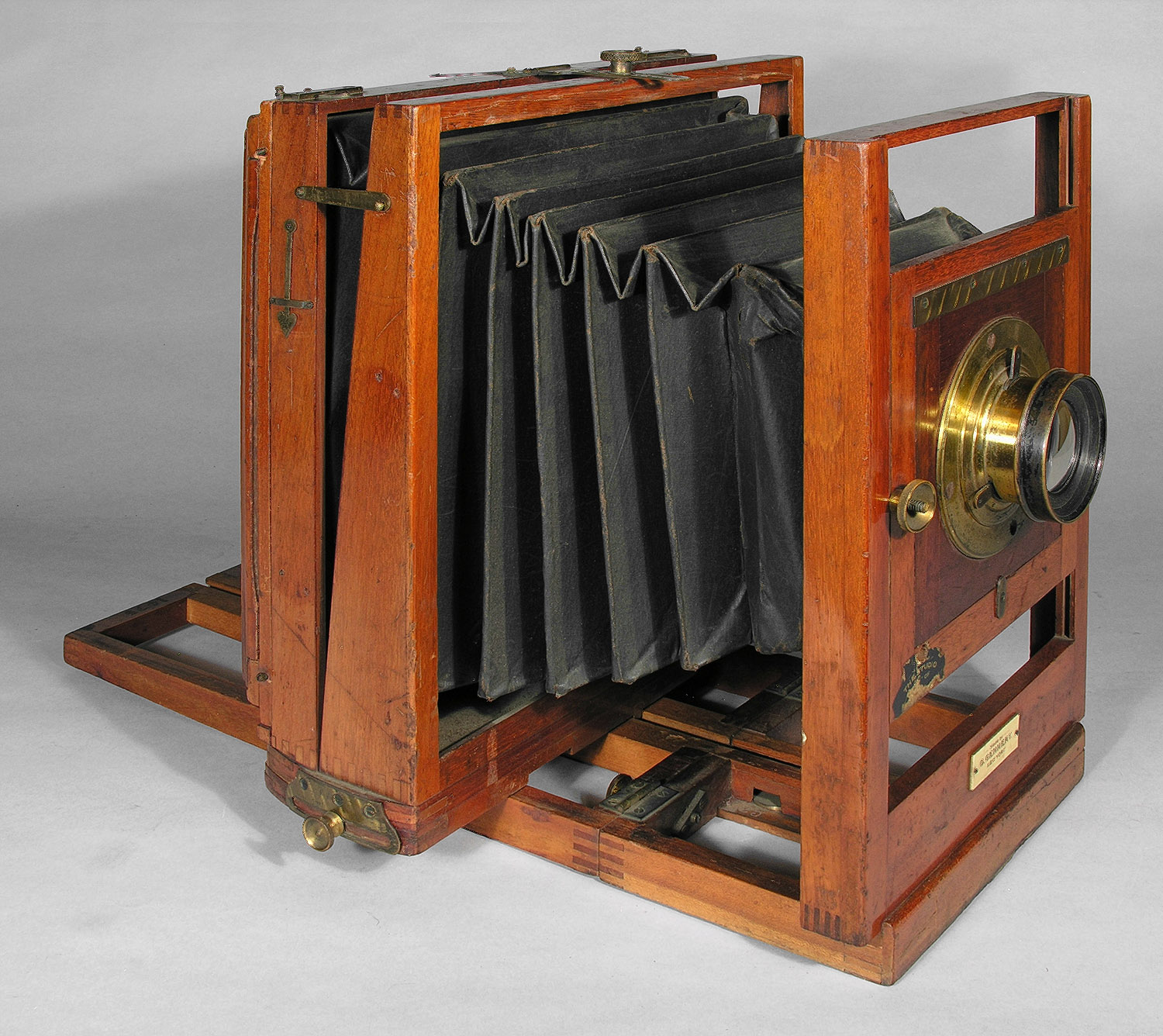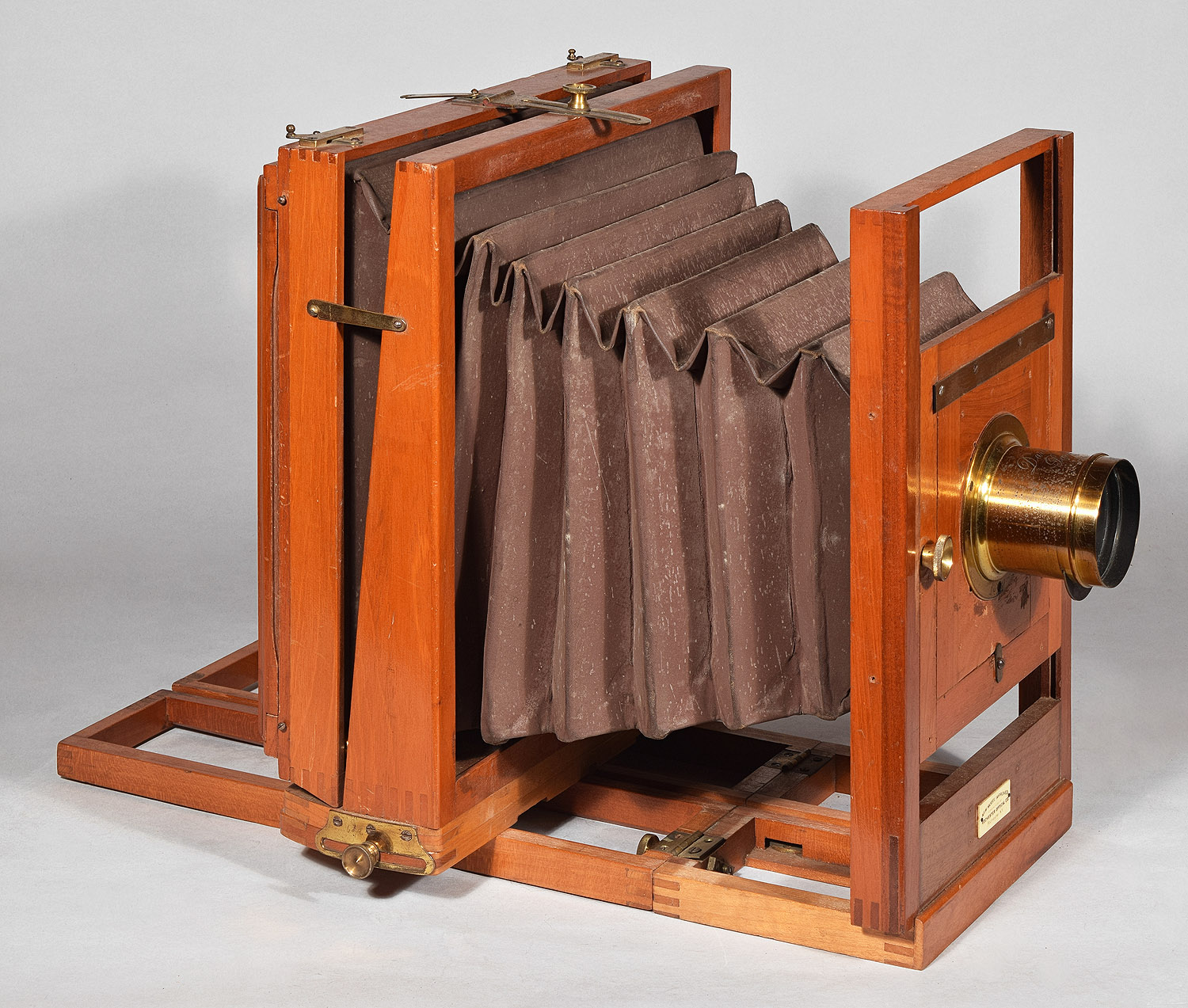G. Gennert, Rochester, New York, NY
Burlington
Camera
Nancy Hanks Camera
Gennert
Catalog 1893, p. 26
6 ½
x 8 ½", serial no. 1551. Label, celluloid, bottom of
front standard Stamp, top of ground glass frame:
"Pat. May 7, 1889 (this probably refers to Erastus Barker's patent No.
402711 for a camera having a spring back) Stamp, large digits stamped
separately, probably the unique serial number of the camera. The
Gennert cameras of this era all have such large digit numbers. Stamp, inside of lens
board, an assembly number. This camera came with a print frame stamped: "G.
Gennert Manufacturer New York". This is the same stamp
that appears on many Gennert cameras of this era (e.g.,














This camera came with two
unmarked plate holders. Gennert cameras of this era had a profile
that is unlike any of the holders made by other manufacturers. The
profile consists of a ramp near the end of the holder from which the
dark slide is drawn, shown below:

8 x 10"; this camera is serial no. 1475.







Date Introduced: - ;
Years Manufactured: c. 1893-1903
Construction: rear focus
via push-pull, double swing, reversible by removable back,
Materials: mahogany body, cherry
base, brass hardware, black fabric bellows
Sizes Offered: 5x7, 5x8, 6 ½x8 ½,
8x10, 14x17
Notes:
In the 1893 catalog, this model is the Burlington View Camera. By 1896, it was termed The Nancy Hanks. Nancy Hanks was the mother of Abraham Lincoln. This model is not present in Gennert Catalog 1904, so had been discontinued by 1903. The 1901 catalog states that the camera has only a shellac finish, and is not (French) polished, but the camera shown above is French polished, so must have been made at an earlier date (possibly 1895), when they were still performing the more elegant and expensive type of finish. All Gennert cameras of this era are very well made and finely finished.
All three of the Gennert cameras: the Oxford Camera LP416, the Brighton Camera LP524 and the Nancy Hanks Camera LP788 came with canvas cases. All of said cases have a similar style, in that the top is hinged on one side, then has a small overhanging flap on two sides, and a large flap on the front. Since they were obtained from different sources, we can safely assume that these are the original cases that were provided by Gennert along with the cameras.
References:
Descriptive Catalogue of Photographic Apparatus
and Supplies, G. Gennert
(New York, NY), c. 1893, p. 26 (As The
Burlington Camera)
Photo Beacon Vol. VIII No. 7, The Beacon
Publishing Co. (Chicago, IL) July 1896, glued
in G. Gennert page No. 3 (As The Nancy Hanks)
Catalogue of Photographic Apparatus and Supplies,
G. Gennert (New
York, NY), 1901, p. 60 (As The Nancy Hanks)
Catalogue of Photographic Apparatus and Supplies,
G. Gennert (New
York, NY), 1903 (As The Nancy Hanks)
8 x 10", serial no. 1673.








Label, celluloid, on the
lower part of the front standard. Oddly enough, when the camera
was purchased, it had a label for a Rochester Optical New Model where
its own label should be. Nail holes were present outside the ROC
label, showing that the original label had been exchanged for the
erroneous label. A Gennert label from another camera was
installed, it being the same size as indicated by the nail holes.
The "new" and correct type label is shown below.

The serial number, on the rear of the platform/bed:
"1673" in large digits stamped separately, as serial numbers usually
are.

8 x 10"; this camera is serial
no. 2174.





